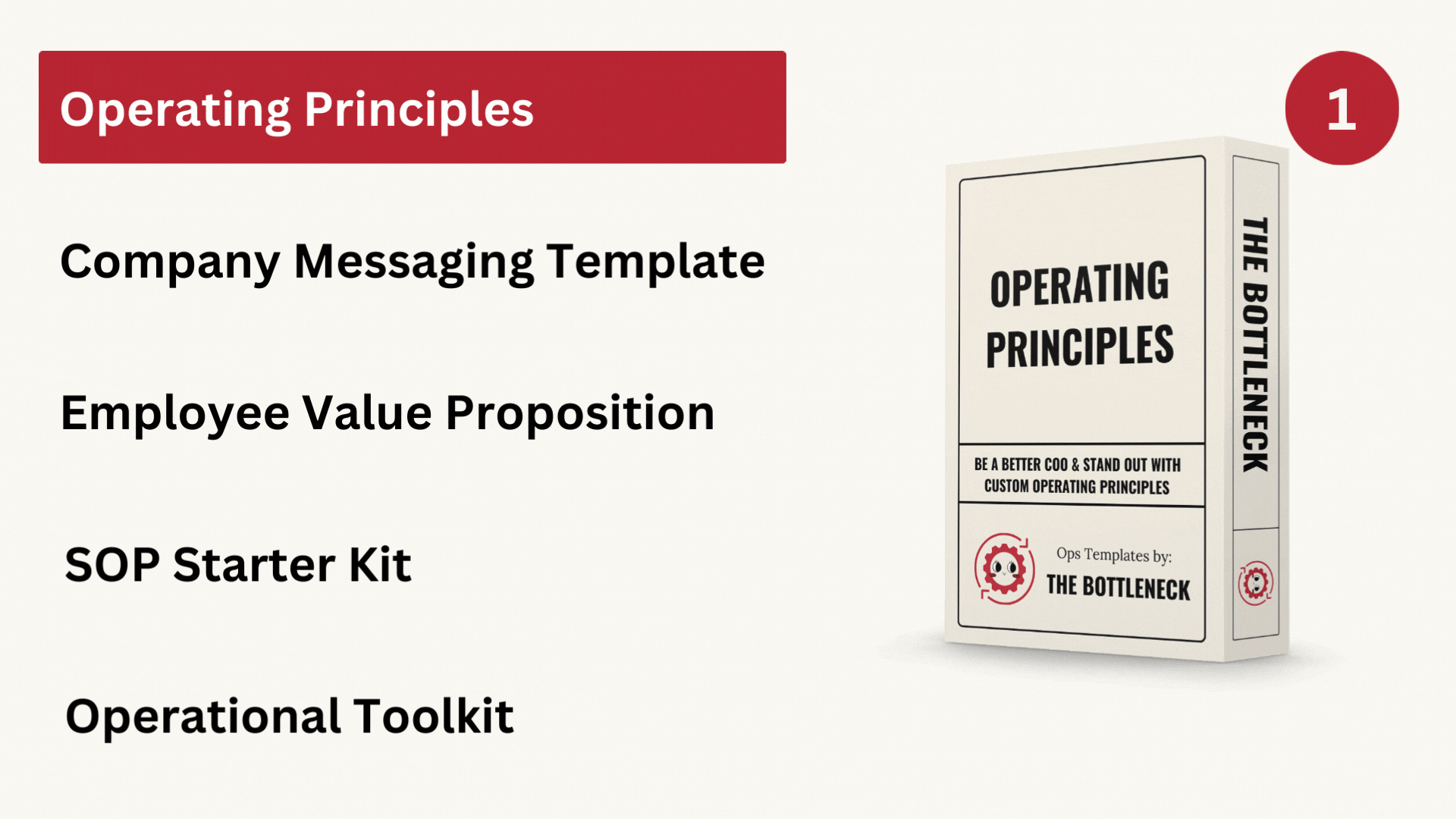
Read Time: 12.5 Minutes
Happy Sunday Operators ⚙️
I’ll be sending acceptance emails to those who will be admitted into Cornerstone's founding group the first week of June. The deadline is June 1st, so apply now to join a group of talented COOs and senior operators.
As I’ve mapped out what tools we’ll use in Cornerstone, Skool has been continually recommended to me.
It has been a trip delving into Skool's offerings. With their focus on education and community building, I can understand why course creators and educators flock towards the platform.
Interestingly, Skool uses its own platform to grow the Skool moderator (so customers) community while finetuning its gamification features.
It’s a double whammy in the best way. Here’s how they are doing it.

Together with Delegatoo
Struggling to Hire Offshore Talent?

Gif by texasscience on Giphy
With Delegatoo, you can hire offshore assistants for a fraction of the price of a US based employee. Don’t spend tens of thousands of dollars to grow your business.
Delegatoo can help you hire someone to help with:
Landing pages
Paid Ad
Emails
All for one simple monthly price. Ready to get started? Click the button down below.

Setting the Stage
How did Skool use their product to scale?
Skool has emerged as a game-changer in the crowded landscape of online education and community platforms.
Founded in 2019 by Sam Ovens, the creator behind Consulting.com, Skool was born out of a simple yet powerful idea.
How can one create a platform integrating learning, community engagem
ent, and live events?
Ovens, no stranger to online education, noticed a glaring problem with existing platforms. Creators had to juggle many tools to deliver content, engage their audience, and manage their communities.
This fragmentation led to a disjointed user experience.
To solve his own problems while scaling Consulting.com. Ovens built the skeleton of what would become Skool.
By combining:
powerful community features
intuitive course creation tools
integrated event management

Skool provides a one-stop shop for creators looking to build and monetize their communities.
But Skool's innovation didn't stop there. They understood that building a successful platform was about engagement. And that's where their secret weapon came in: gamification.

Skool recognized that traditional online learning and community platforms struggled with user engagement.
Learners would lose motivation, and community participation would dwindle over time. To combat this, Skool turned to gamification.
By integrating game-like elements such as points, levels, leaderboards, and rewards, Skool transformed the user experience.
Suddenly, learning and participating in the community became fun and rewarding. Users were motivated to engage, contribute, and keep coming back.
But Skool didn't build these gamification features and hope for the best. They put their money where their mouth was and embraced dogfooding their product.
Dogfooding, the practice of using one's own product, is a common strategy in the tech world. But Skool took it to the next level. They didn't just use their platform; they built their entire community on it.
From day one, Skool hosted its own vibrant community of creators and educators on its platform. This served multiple purposes:
Showcase the Platform: By dogfooding, Skool could prove the power of its platform in the real-world. Prospective users could see, firsthand, what a thriving community looked like on Skool.
Gather Valuable Feedback: Hosting their own community gave Skool a direct line to their most valuable resource: their users. They could gather real-time feedback, identify pain points, and iterate quickly based on user needs.
Foster Trust and Loyalty: By being participants in their own community, Skool built trust and credibility with their users. They weren't just a faceless platform. They were fellow community builders, learning and growing alongside their users.
The combination of gamification and dogfooding proved to be a powerful growth engine for Skool. Engagement soared as they continued to improve their platform based on user feedback.
Users, motivated by the rewarding experience of Skool's gamification, contributed more, learned more, and invited others to join. The vibrant community, powered by Skool's active participation, became a self-sustaining growth ecosystem.
Skool's user base and revenue grew exponentially. They had cracked the code on user engagement. And their platform was reaping the benefits.
So what does that have to do with you?
Ops Tactic: Increase user engagement through continuous improvement of your product by dogfooding your own tools

Why this Matters
3 reasons why you should care
Skool is a powerful lesson in the future of online education, community-building, and user engagement.
Here's why you should be paying attention:
1. The Power of Community-Driven Learning
Gone are the days when learning was a one-way street, with content delivered from teacher to student. Skool has shown that the future of learning is community-driven.
By creating a platform that prioritizes community engagement alongside educational content, Skool has tapped into a powerful truth. We learn best when we learn together. When learners can interact, collaborate, and share knowledge, the learning experience becomes richer, more engaging, and more effective.
2. Gamification: The Future of User Engagement
By integrating game-like elements into its platform, it has transformed the way users interact with content and with each other.
This isn't just about making learning fun (although that's certainly part of it). Gamification taps into powerful psychological drivers - the desire for achievement, recognition, and competition.
By rewarding users for their contributions and progress, Skool has created a self-reinforcing cycle of engagement.
3. Dogfooding: A Lesson in Authentic Leadership
Perhaps the most impressive aspect of Skool's journey is their commitment to dogfooding. By using their own platform to build their community, they've set a powerful example of authentic leadership.
Skool is in the trenches with their users, facing the same challenges, and celebrating the same successes.
This level of authenticity builds trust and credibility in a way that no marketing campaign ever could.
So whether you're an educator, a content creator, a business leader, or just someone who cares about the future of online communities, Skool's story matters.

The Blueprint
Dogfooding, the practice of using your own product within your organization, has emerged as a powerful strategy for driving growth, engagement, and continuous improvement.
As demonstrated by Skool's remarkable success, dogfooding can be a game-changer when done right.
But how exactly do you implement dogfooding effectively? Let's break it down into three crucial steps, drawing from Skool's own playbook.
I. Commit to Living Your Product
The first and most fundamental step in successful dogfooding is a commitment to actually using your product. This might seem obvious, but it's surprising how many companies fail to fully embrace this principle.
For Skool, this meant not just using their platform occasionally, but actually building their entire community on it. They committed to living and breathing their product, making it an integral part of their day-to-day operations.
This level of commitment is essential for reaping the full benefits of dogfooding. It ensures that you're not just paying lip service to the idea, but truly experiencing your product as your users do.
Practical tips:
Make your product the default choice for relevant tasks within your organization.
Encourage (or even mandate) all team members to regularly use and contribute to the product.
Lead by example - ensure that leadership is actively using and championing the product.
II. Cultivate a Feedback-Driven Culture
Dogfooding provides a unique opportunity to gather real-time, firsthand feedback about your product. But to capitalize on this opportunity, you need to cultivate a culture that values and acts on feedback.
Skool excelled in this area. They didn't just passively use their platform; they actively sought out feedback from their team members.
They treated every piece of feedback, whether it was a bug report, a feature request, or a user experience insight, as a valuable learning opportunity.
More importantly, they acted on this feedback. They used it to continuously iterate and improve their product, ensuring that it was always evolving to meet the needs of their users.
Practical tips:
Create easy, accessible channels for team members to provide product feedback.
Regularly solicit feedback, both through formal channels (like surveys) and informal conversations.
Prioritize and act on feedback - show your team that their insights are valued and impactful.
III. Leverage Dogfooding for Authentic Storytelling
Dogfooding isn't just an internal strategy; it can also be a powerful tool for external messaging and storytelling.
Skool understood this. They didn't just dogfood quietly behind the scenes; they made it a central part of their brand narrative.
By showcasing their own thriving community, built on their own platform, they provided a compelling proof point for the effectiveness of their product.
This authentic storytelling builds trust and credibility with potential users. It shows that you're not just selling a product, but that you believe in it enough to use it yourself.
Practical tips:
Share your dogfooding journey through blog posts, case studies, or social media.
Highlight specific examples of how dogfooding has helped you improve your product or your operations.
Use your own product success stories in your sales and marketing materials.
Dogfooding, when implemented with commitment, a feedback-driven mindset, and authentic storytelling, can be a transformative strategy. It has the power to:
Drive product improvements through firsthand experience and real-time feedback.
Boost user engagement by demonstrating your commitment to and confidence in your product.
Build trust and credibility with potential users through authentic storytelling.
Skool's journey provides a compelling case study in the power of dogfooding.
By committing to living their product, cultivating a feedback-driven culture, and leveraging their own success story, they've not only built a better product but also a stronger brand.
As you consider how to implement dogfooding in your own organization, remember that it's not just about using your product; it's about embodying the values and experiences you want to create for your users. It's about walking the walk, not just talking the talk.
So take a page from Skool's playbook. Embrace dogfooding wholeheartedly, let it drive continuous improvement, and make it a part of your story. The results might just surprise you.

Spread The Word
Share The Bottleneck with friends to get a few freebies. Maybe you’ll make some new ones on the way 😆
We’ll give you free stuff and more friends if you share a link. Only one link.

{{rp_personalized_text}}
